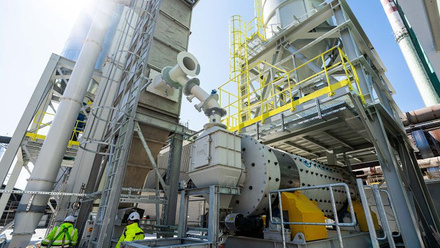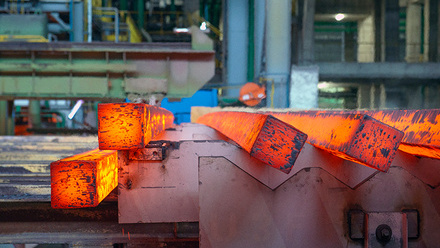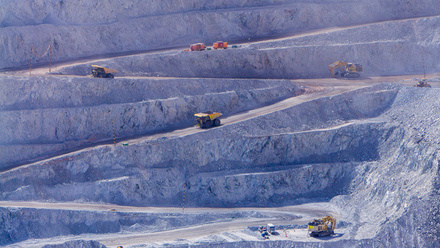ALSF Research Reports - overview
The IOM3 digital library contains Aggregates Levy funded content, more will be added soon.

The Aggregates Levy Sustainability Fund (ALSF), which ran from 2002 to 2011, provided unprecedented levels of funding for applied research projects across a wide range of environmental themes. All of these were related, in one way or another, to the ambition of avoiding, reducing, or compensating for, the adverse environmental effects of primary aggregate extraction.
The IOM3 digital library will soon provide access to pdf copies of the final reports from most of those projects. For now, it includes some of the ‘headline’ reports – those which are mentioned below, but many others will be added later in the year. By clicking on the library link, you can search freely for the reports which are available, but must register to download documents (free registration). The reports provide a wealth of information and many of them are as relevant today as they were when they were commissioned.
Relevance: In some cases (for example those which identify good practice techniques of environmental monitoring or mitigation) the recommendations may have been superseded by more recent developments. In others, quoted statistics may have been superseded by more recent data. In many cases, the planning and other policy background information referred to within the reports will have changed considerably. This needs to be borne in mind when using the reports and reference will need to be made, instead, to current policy requirements. Nevertheless, the reports still provide invaluable sources of information and ideas which should be widely used, in the interests of maintaining the ongoing objective of minimising adverse effects.
Quality: In terms of accuracy, reliability and overall quality of research, an important note of caution must be given. Some of the projects were commissioned by (or in conjunction with) central Government Departments or Agencies and both the research and the reports are therefore likely to have been carefully scrutinised. In those and other cases, the research may have been overseen by Steering Committees, made up of minerals industry professionals, regulators, environmental NGOs and/or other interest groups, thus ensuring that the final reports were subject to ‘peer review’. In other cases, however, this was not the case: reports were subject only to internal checking by the authors and their professional colleagues and to financial checks by the funding organisations involved. It is, therefore, for the users of these reports to confirm their status (e.g. by reference to any acknowledgements given to Steering Group members) and to verify the accuracy of their content. In particular, no warranty at all can be given by IOM3 as to the accuracy, reliability or continued relevance of anything contained within any of the reports.
Background
The Aggregates Levy was introduced by the Treasury in April 2002, with the intention of “creating environmental benefits” by making the market price of primary aggregates[1] better reflect their true social and environmental costs, and (as a consequence) by encouraging the greater use of alternative (recycled and secondary) materials[2] that are exempt from the levy. It is widely accepted, however, that there is a limit to the proportion of primary aggregate that can be replaced by alternative materials. This, in turn, means that there is a substantial and continuing requirement for primary aggregate extraction, and thus a continuing need to control the associated environmental impacts.
The Aggregates Levy itself has never been able to deal with these ‘residual’ effects: it is a relatively blunt instrument which can only increase the cost of primary products. It is for this reason that part of the revenue raised by the Levy was used, for a time, to implement the Aggregates Levy Sustainability Fund (ALSF). This enabled additional, more targeted initiatives to be undertaken to reduce these effects and to create a range of environmental benefits. Without the ALSF, the environmental and sustainability benefits that can be achieved by the Levy itself are far more limited.
In England, the ALSF ran from 2002 to 2011, before being withdrawn (due in part to funding pressures elsewhere, following the global financial crisis of 2007-2008). During that time, the majority of ALSF funding was focused on projects which sought to provide those benefits directly, for example by creating new habitats in areas affected by past extraction, or by providing recreational access to such sites so that they may be more widely enjoyed by local communities. A much smaller, but still significant proportion of the funding, however, was used to support a variety of research projects, both on land and in the marine environment.
The research funding was delivered through a number of separate, targeted initiatives, managed by a range of selected ‘Delivery Partners’. Initially, these comprised:
- The Department for Trade and Industry (DTI)
- the Waste and Resources Action Programme (WRAP)
- the Office of the Deputy Prime Minister (ODPM)
- the Mineral Industry Research Organisation (MIRO)
- English Heritage (EH)
- English Nature (EN)
- the Countryside Agency (CA) and
- the Centre for Environment, Fisheries and Aquaculture Science (CEFAS)
Whilst the last of these was devoted to marine-based projects, all the others were focused, primarily, on land-based research.
Research reports
Taken together, a very substantial volume of research was funded over the period up to 2011, with a gradual shift in priorities over time, from detailed studies of impacts and mitigation methods and demonstrations of good practice to more strategic overviews and dissemination projects.
During 2008, a series of 12 Benchmark Reports were produced, covering each of the main research areas funded through the MIRO, ODPM and English Heritage programmes. Each of these provides a very useful overview of the topic and summarises the ‘state of the art’ in each area of work, at that time. The reports were written by recognised experts in their fields and were reviewed by industry representatives and other key stakeholder groups. To varying degrees, they also ‘signpost’ relevant individual research reports, which provide further detail – all of which can be accessed from this site. The Benchmark Reports thus provide an ideal starting point for anyone wishing to review the findings of ALSF research. All of them are now in the digital library and can be retrieved by typing all or part of their titles (as listed below) into the search engine. Or using the keyword search for Aggregates Levy Sustainability Fund.
Theme 1 Reducing the environmental effect
- Reducing the environmental effect of aggregate quarrying on the water environment, Thompson A., Howarth C.
- Reducing the environmental effect of aggregate quarrying: dust, noise & vibration, Birch W., Datson H., Lowndes I.
- Reducing the environmental effect of transporting aggregate, Fry C., Wayman M.
Theme 2 Sustainable provision of aggregates
- Sustainable provision of aggregates: assessment & planning, Steadman E., Colman T., Fry C., Greenwood R.
- Optimising the efficiency of primary aggregate production, Lowndes I.S., Jeffrey K.
- Sustainable utilisation of quarry by-products, Petavratzi E., Wilson S.
Theme 3 Creating environmental improvements
- Creating environmental improvements through biodiversity, Davies A., Weir J.
- Creating environmental improvements through geodiversity, Scott P., Roche D., Nicholas C., Lawrence D., Ambrose K.
- Creating environmental improvements through restoration, Jarvis D., Rimaud C., Cripps J.
Theme 4 Heritage
- Rich deposits - Aggregates extraction, research & the knowledge pool, Miller J., Poulter A., Hewson M., Penrose S., Andrews G., Barrett J.
- Aggregates extraction & management of the historic environment, Flatman J., Short J., Doeser, J. and Lee, E (eds.)
- The sands of time – Aggregates extraction, heritage and the public, Richards J.
In addition to these 12 reports, there is an overall Summary Report A review of Aggregates Levy Sustainability Fund research projects, Allington R., White T.) and a separate Overview report which provides outlines the design and management approaches available for reducing the environmental footprint of a quarry throughout its lifecycle (The design & management approaches to reducing the environmental footprint of the supply chain for land-won aggregates, Allington R., White T.). This identifies the elements of the environmental footprint and the range of environmental effects associated with each and then deals with how these are avoided, mitigated or incorporated in the delivery of long, medium- and short-term environmental benefits. Chapters covering health and safety and stakeholder engagement are also included.
In the final years of the ALSF, between 2009 and 2011, MIRO’s Aggregates Strategic Research Programme (ASRP) examined various aspects of the sustainable production and supply of aggregates in the years ahead. These projects followed on from the benchmark reviews and, to some extent, were guided by research gaps identified in those documents. They are therefore worthy of specific mention. Their overall objective was to provide an enhanced evidence base for the policymakers and decision-takers in central and local government, industry and others and thereby to inform their actions in securing future sustainable aggregates production and supply in the UK. The individual projects in this series, and the titles and authorship of their final reports all of which can now be found in the library were as follows:
Project 1: Develop a horizon scan for the production of aggregates. (Aggregate industry horizon scan project report, Steele K., Perkins C.
Project 2: Evaluate the environmental impacts of aggregates within designated areas. (An evaluation of decisions for aggregates working in designated areas since the introduction of MPS1 Open Report OR/09/058, Bee E.J., Jarvis D., Bate R., Devine-Wright P., Wrighton C.E., Idoine N.)
Project 3: Develop an ecosystems approach to decision-making in the planning and restoration of aggregates quarries. (An ecosystems approach to long term minerals planning in the Mendip Hills: Phase II final report, Thompson A.)
Project 4: Scoping study for assessing decisions on when to build new rather than adapt old housing. (Scoping study: An examination of the factors affecting the decision making process on whether to redevelop or refurbish UK residential property, Shiers D., Rapson D., Cooke K., Le Cornu E.)
Project 5: Assess the feasibility of using pipelines to transport aggregates. (Aggregate Strategic Research Programme Project 05: Assess the feasibility of using pipelines to transport aggregates in England)
Project 6: Assess the design of lorries and quarries for aggregates transport. (Assess the design of lorries and quarries for aggregate transport, Brighton J., Richards T.)
Project 7: Assess the feasibility of underground mining of aggregates. (Underground mining of aggregates main report, Brown T.J., Coggan J.S., Evans D.J., Foster P.J., Hewitt J., Kruyswijk J.B., Millar D.L.,Smith N., Steadman E.J.)
Project 8: An evidence based approach to predicting the future supply of aggregate resources in England. (British Geological Survey Minerals and Waste programme Open Report OR/11/008: An evidence based approach to predicting the future supply aggregate of resources in England, Lusty P.A.J., Bee E.J., Bate R., Thompson A., Bide T., Morigi A., Harris K. Contributor/editor: Mankelow J.M., Bloodworth A.J.)
Project 9: The barriers to underground mining of aggregates – An overview. (The barriers to underground mining of aggregates – an overview, Hicks L.)
Project 10: Distributing bulk minerals to future markets. (Distributing bulk aggregates to future markets, Brass R., Skene R., Bate R.)
Project 11: Assessing the environmental impact of regional and sub-regional supply options. (Proposed toolkit for developing aggregate apportionment options (ASRP 2/8))
Finally, a Synthesis Report (Future aggregates supply in England key issues for decision-takers, Hicks L.)was produced to draw out the key messages from all eleven strategic reports and to highlight their relevance for future policy.
As noted above, the library content will gradually be expanded to include many other ALSF reports in the months ahead.
[1] Primary aggregates comprise natural sand & gravel, whether from land-based or marine sources, together with crushed rock from inland and coastal quarries.
[2] Exempt alternative materials comprise recycled aggregates, produced from previously used materials such as construction, demolition and excavation waste (CDEW); and secondary aggregates - those such as china clay sand, slate waste, colliery spoil and blast furnace/steel slags, generated as the by-products of other primary processes.







